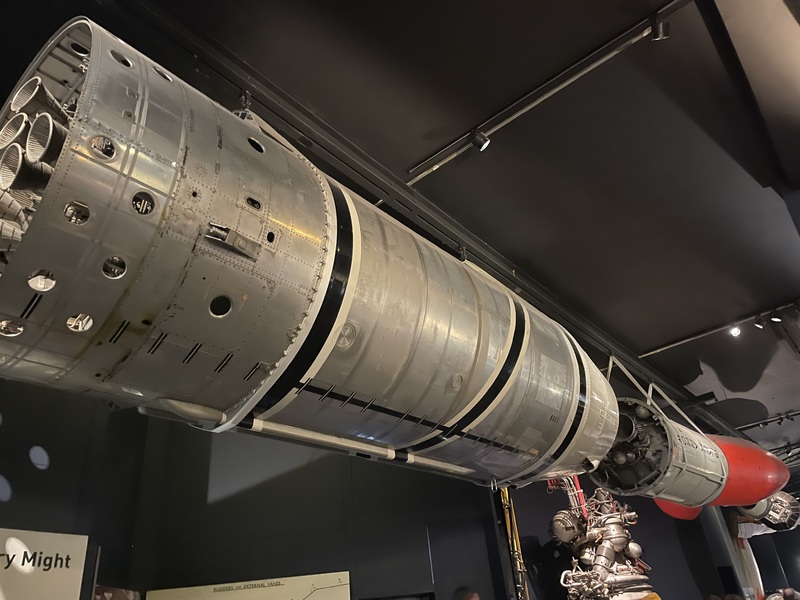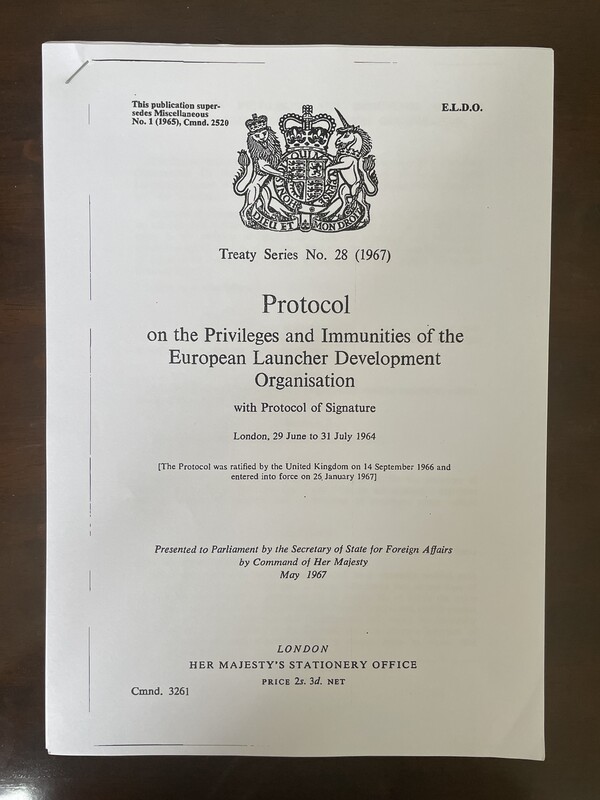
European Luancher Development Organization
Erissa Morin, Spring 2025
While not nearly as well known as the European Space Agency (ESA), the European Launcher Development Organization was established in 1962 by Australia, Belgium, France, West Germany, Italy, the Netherlands, and the United Kingdom. In a time where the United States and the Soviet Union were in an arms and space race, the following European countries were also looking to establish their own space technology. ELDO had initially been created due to the United Kingdom’s need for another source of funding for their already developed ballistic missiles, but the lasting effects of ELDO would go beyond just developing missile technology. While ELDO faced much backlash while it existed, it would pave the way for the European Space Agency now known today.
What set the stage for ELDO being formed was the United Kingdom’s interest in developing its own missile technology. After World War II, Britain and its allies were focussed on developing rocket interceptors to protect themselves from potential bombings. Additionally, with the United States and the Soviet Union quickly developing their own space technology, the United Kingdom wanted to keep up with these other nations. The United Kingdom’s first rocket was The Blue Steel Missile Project which was started in the early 1950s. The Blue Steel was primarily created as a response to the nuclear bomb developed during World War II. Because this was the United Kingdom’s first missile project, there were struggles with finding a suitable contractor for this new technology. The British government chose A.V Roe as the contractor for the Blue Steel. Because no British company had any experience in developing rockets, A.V Roe faced some challenges when it came to this new project. Eventually, the Blue Steel was completed and tested but unfortunately the technology was dated and did not keep up with other defense solutions being developed by the U.S.
While A.V Roe was working on the Blue Steel Missile, the Blue Streak Missile was also being developed. The U.S and U.K had an agreement to develop rocket technology together with the U.S creating Atlas, a long range missile, and the U.K developing Blue Streak, a mid-range missile. Similarly to the Blue Steel Missile, Britain had a difficult time developing the Blue Streak Missile due to its limited experience in propulsion and rocket technology. Because the Blue Streak was designed to be a mid-range ballistic missile, the design process was more strenuous than the Blue Steel design. Due to this more challenging project, the contractors and the government had many disagreements during the development stage of the Blue Streak. Even with the completion of the Blue Streak Missile, the British government ran out of funding for this ballistic missile and did not test the missile for military purposes. Many British government officials were still interested in continuing the development of rocket technology which led to talks of the beginning of the European Launcher and Development Organization.
After much discussion between British officials and other European officials, the British initiated the creation of ELDO. The founding countries of the European Launcher Development Organization worked together to create the Europa Rocket with the Blue Streak being stage one, France developing stage two, and Germany developing stage three. The Europa Rocket would be designed for scientific research and to put a satellite into orbit. Because the U.S and the Soviet Union had dominated the space race during this time, European countries felt a large pressure to establish themselves in space, especially when it came to satellites. During its time developing the Europa Rocket, ELDO faced backlash from some officials from various European countries in the organization. Funding was a continuous issue for the Europa Rocket with Britain providing a large portion of the funding for the beginning of the development. As for the development aspect of ELDO, Britain had its finished Blue Streak rocket while France and Germany were still working on their stages of the Europa Rocket. The first few tests of the Europa Rocket were composed of the Blue Streak as the first stage with dummy stages for the second and third stages. The testing for the Europa Rocket was done in Woomera, Australia. During the testing of the Blue Streak first stage, France and Germany had the time to develop their own stages for this rocket. France designed the second stage of the Europa Rocket which would connect the Blue Streak first stage to the German third stage which would house the satellite. ELDO was able to design and create the Europa Rocket and tested it a total of ten times. While not all of the ten tests were successful, ELDO was able to create the full three stage Europa Rocket. Eventually ELDO was disbanded due to lack of funding. During the end of ELDO’s time, Britain had pulled much of its funding and was looking into continuing its own development of military and scientific rockets.
Towards the end of the ELDO’s life, the UK decided to pursue its own rockets further and limit its funding towards ELDO’s Europa Rocket. The UK started working on The Black Arrow which was a combination of the Blue Streak and Black Night. The Black Arrow was a three stage rocket designed for establishing satellites similarly to the purpose of the Europa Rocket. Because of the United Kingdom's limited involvement in ELDO, it turned its focus to the development of their own Black Arrow Rocket. The Black Arrow was built and tested four times. The fourth test was successful and Britain was able to put its own satellite into low Earth orbit. Because of this success, the Black Arrow Rocket can now be seen in the Science Museum in London, England.
The European Launcher Development Organisation had a unique start with Britain in the need of funding for their own already developed Blue Streak. ELDO faced many challenges during its time working on the Europa Rocket due to communication issues between nations along with criticism of waste of funding. Even with these challenges, ELDO was able to successfully design and test the Europa Rocket. Towards the end of the organization’s life, Britain, who had pushed for the creation of the organization, limited its involvement and pursued other projects like the Black Arrow. Eventually, the European Launcher Development Organization was disbanded because it ran out of funding. The European Launch Development Organization (ELDO) along with the European Space Research Organization (ESRO) would go on to form the European Space Agency (ESA) which is active to this day.
Bibliography
- Hill, Charles. A Vertical Empire: The History of the UK Rocket and Space Programme 1950-1971. Imperial College Press, 2001.
- European Launcher Development Organization—Beginning and End. Nature 210, 1091 (1966).
- Eighteen-Nation, United Nations., and European Organisation For. Protocol on the Privileges and Immunities of the European Launcher Development Organisation, with Protocol of Signature. London, June 29, 1964, Etc. Eng. & Fr. 1965.
- “Photograph of Black Arrow” Science Museum, March 14, 2025.
- “Photograph of Miniature Europa II” Science Museum, March 14, 2025.
- “Photograph of European Launcher Development Organization - Beginning and End, Nature Article” British Library, March 12, 2025.
- “Photograph of Protocol on the Privileges and Immunities of the European Launcher Development Organisation” British Library, March 12, 2025
Acknowledgments
I would like to thank the UAH Honors College for this study abroad opportunity as well as providing me with the SAGA Grant. I would also like to thank Mr. Grimsley and Ms. Staton for being amazing faculty for this class.




